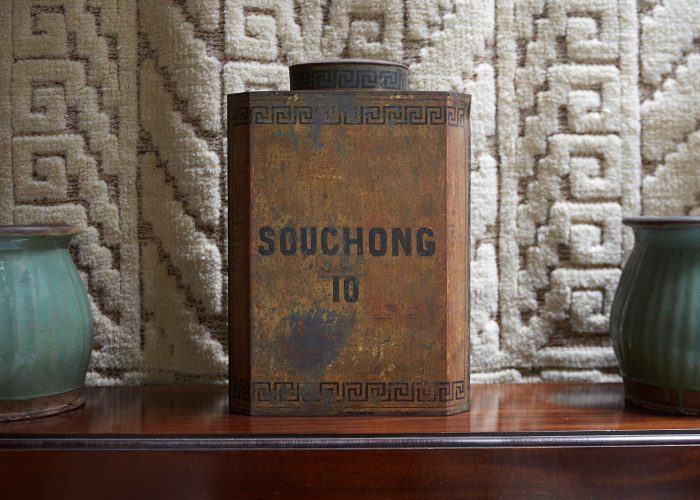
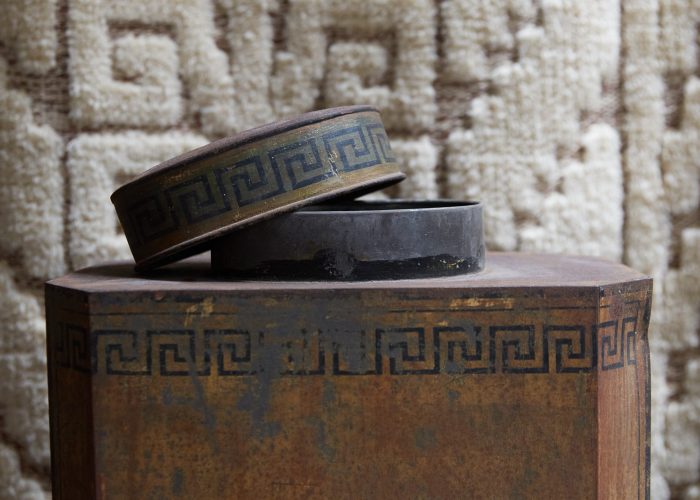
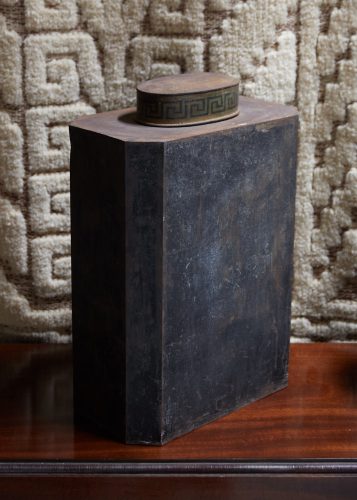
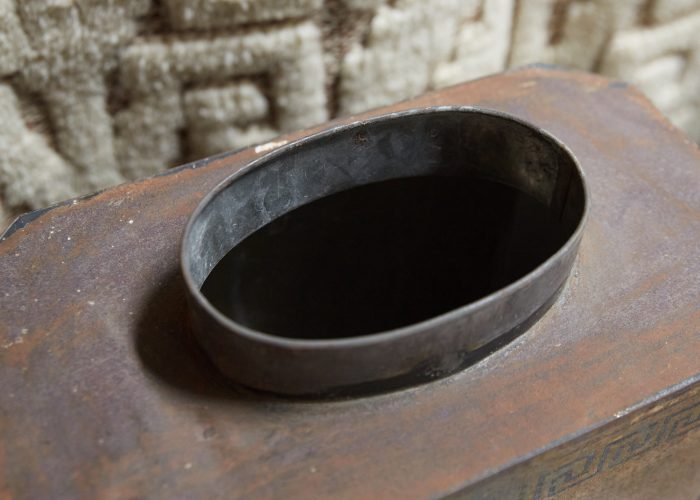
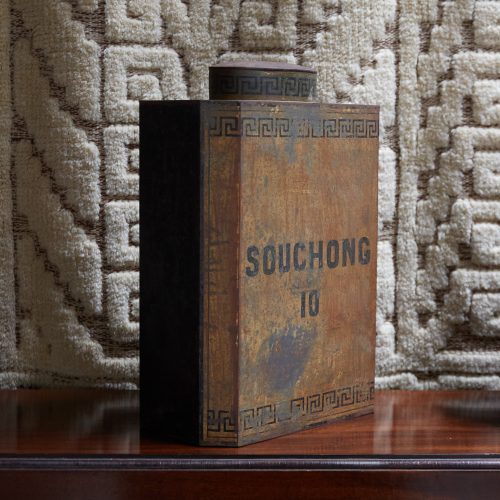
Large and Unusual C19th Toleware Souchong Tea Tin
A large and unusual 19th Century toleware Souchong Tea tin, the rectangular canister having canted corners and an oval lid with large greek key motifs to either end. The base having a secret sealed cavity, originally used for hiding and smuggling opium. In lovely original condition, retaining a worn warm colour and surface.
Dimensions
Max Width: 360mm / 14¼"Max Depth: 210mm / 8¼"
Max Height: 530mm / 20¾"
Item code: HL4749
Price: £650.00
Enquire
Download Tearsheet